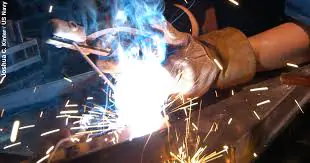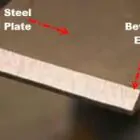Once sparks start to fly, spatter on the workpiece usually follows soon after. And once it’s there, it has to be taken out, which takes time and costs money. Since preventing something is better than fixing it, we should do what we can to stop soldering sparks or at least cut it down to a minimum. However? Every welder can do something to help stop spatter, whether it’s by using the right equipment, getting the materials ready, holding the torch the right way, or making small changes to the workplace. With these 5 tips, you can also fight against soldering sparks.
Why is it so important to avoid spatter when welding?
Soldering sparks is the name for the small drops of metal that are shot out of the weld area by the power of the arc. They usually land on the workpiece, the weld, or the parts of the welding torch that wear out. Weld spatter can cause more problems than just cleaning that takes a long time and costs a lot of money.
- Less quality in the weld seams.
- Unclean and dangerous place of work.
- Downtimes in production.
Because of this, welding spatter should be stopped whenever possible. You’ll be ready for anything with our quick tips. Let’s start with the best tools for welding!
1. Make sure the current keeps going.
To stop weld spatter, you must have a constant flow of current. So, it’s important that the welding torch and the cable that goes back to the power source are securely connected. The same goes for the component’s grounding: the fastening point and earthing clamp must be clean and highly conductive for the current to flow.
2. Make sure the wirefeed is always on.
So that there is as little waste as possible when welding, the arc needs to be stable. And you need a steady wirefeed to keep the arc stable. Three things are important to make sure of this:
- Make sure the welding torch has all the right parts (inner liner, inlet piece, etc.).
- Make sure there are as few bends in the hosepack as possible.
Adjust the contact pressure at the wire-feeding rollers to match the wire being used. “Too little pressure can let the wire slip through, causing a wirefeeding problem that can quickly turn into a spatter problem,” says expert welder Josef Sider.
3. Choose the right amount of the right shielding gas.
Weld spatter can happen when the protective gas shield isn’t strong enough to keep the arc stable. The gas flow (rule of thumb: wire diameter times 10 = gas flow rate in litres per minute) and the stick out (the free wire end), which needs to be short enough to work as a gas shield, are the most important things here. Choosing the right gas is also important for low-spatter welding, since welding in a normal CO2 gas atmosphere makes more spatter when the power is turned up. Use mixed gases instead of 100% CO2 to make it even harder for welding spatter to stick.
4. Choose the right parts to wear.
There are a few things you need to think about when it comes to parts that wear out and welding spatter. First, the material and diameter of the welding wire must match the material and diameter of the parts that wear out, such as the wirespools, inner liners, and contact tips. Second, the amount of wear has an effect on how much spatter there is. When welding, parts that are very worn can make the process less stable, which in turn makes more welding spatter.
5. Use the right parameters for welding.
To stop welding spatter as much as possible, it is important to choose the right welding parameters, especially when setting the power range of the intermediate arc. Changing from the dip transfer arc to the spray arc requires increasing or decreasing the power, depending on the situation.
Still too much slag from welding? Change the way you weld.
When you use all of these tips, you will have a very stable arc and will be able to stop spatter from happening while welding. But if you need even more stability and want to cut down on the amount of spatter even more, you might want to switch to a new way of welding.
You can stop or at least cut down on welding spatter by doing a number of things. You should, too! After all, low-spatter welding saves time and money while improving the quality of the weld and making sure the workplace is safe.





